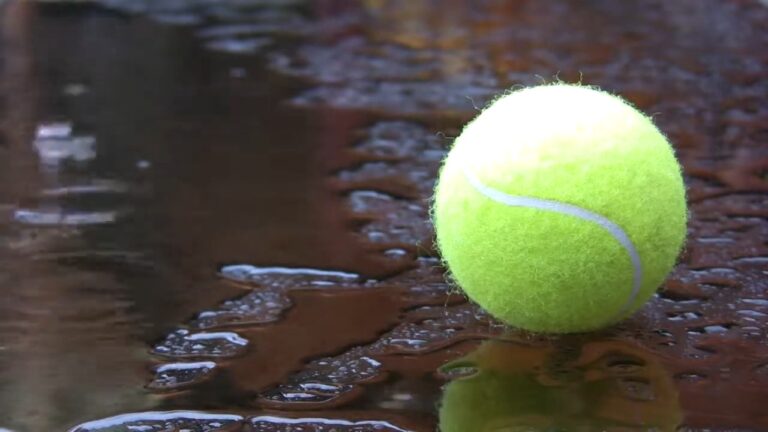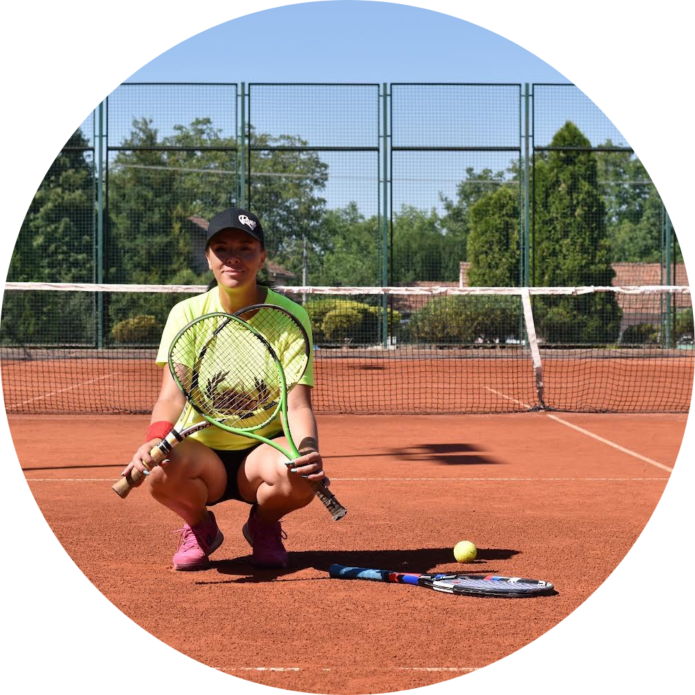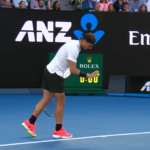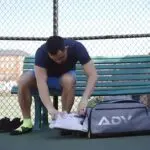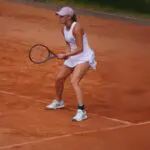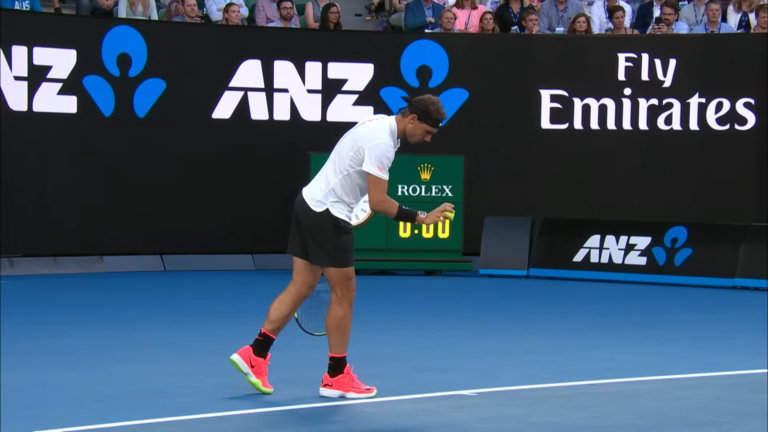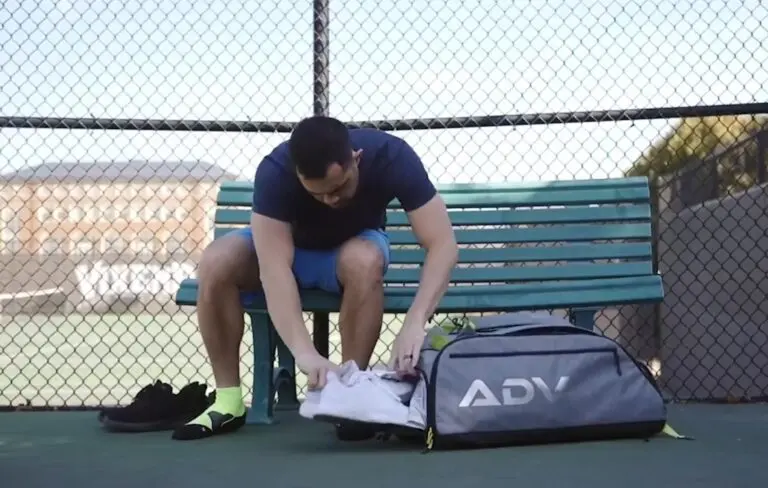Playing tennis in the rain is a topic that often stirs up a mix of humor and genuine curiosity among enthusiasts. The elements add an unpredictable twist to the sport, and rain is no exception. It’s a scenario that every player might encounter, prompting a closer look at how weather affects play and what considerations should be taken when clouds start to gather over the court.
The decision to play tennis in the rain is not just about the willingness to get wet; it involves understanding the impact on the court surface, equipment, and the players’ well-being. As a coach, I’ve seen how even a light drizzle can alter the game’s dynamics, from the speed of the ball to the traction underfoot.
Can You Play Tennis in The Rain?
The question of whether you can play tennis in the rain is one that comes with several layers to consider. Official matches are typically halted at the first sign of precipitation for professional safety and to maintain the quality of play.
However, casual players might be tempted to continue their game despite a light drizzle. It’s crucial to recognize that rain affects not just the ball’s behavior, but the court’s surface as well, making it slippery and potentially dangerous. Moreover, the moisture can affect your grip on the racket and the overall experience of the game.
For those pondering a quick match under grey skies, it’s important to weigh the risks. Waterlogged courts can lead to injury, and the altered conditions can strain muscles as players attempt to compensate for the unpredictable play.
While a few raindrops don’t necessarily signal the end of fun, they do serve as a reminder to play with caution. If the skies open up, it might be the perfect time to practice mental strategies or engage in off-court conditioning, saving the rallies for a sunnier day.
How long does the tennis court dry after rain?
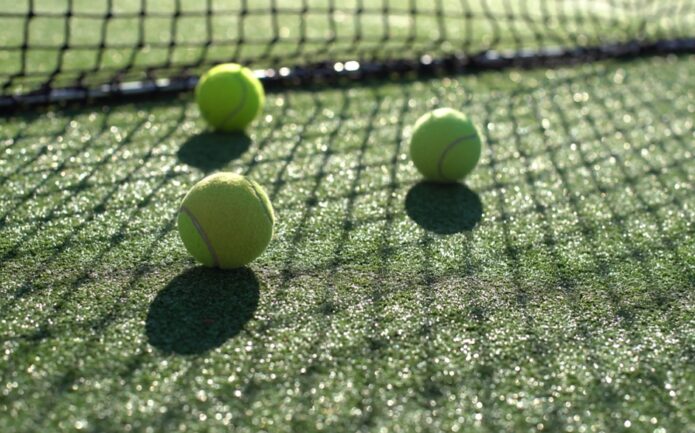
From my experience overseeing countless matches and practice sessions, a hard court can dry within 30 minutes to an hour under ideal conditions — warm weather and a light breeze work wonders. Clay and grass courts, however, are more temperamental. Clay courts can take a couple of hours, as the surface needs to retain a bit of moisture to be playable, while grass courts may need a full day or more to recover, especially if the rain has been heavy.
It’s not just about the surface, but also about the location and the resources at hand. Some facilities use rolling dryers, squeegees, or even leaf blowers to expedite the drying process. In my coaching days, I’ve seen players and staff come together, armed with towels and squeegees, turning court drying into a community effort. This not only speeds up the process but also fosters a sense of camaraderie.
How Does Water Affect Tennis Balls?
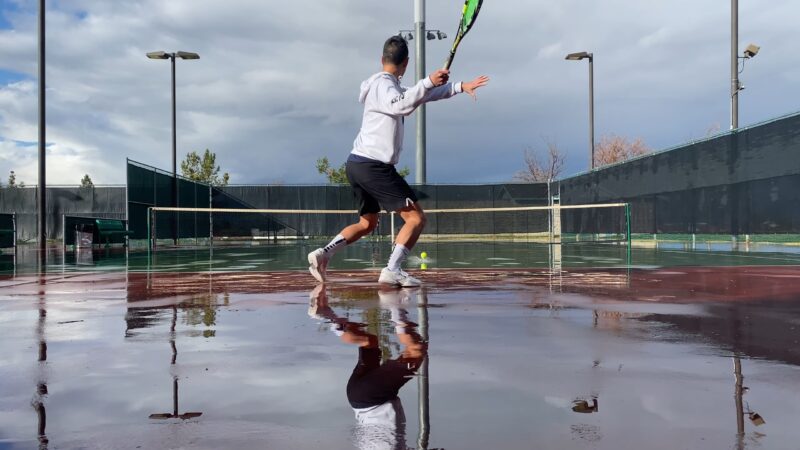
When tennis balls get wet, the fibers on the outside absorb the moisture, which causes them to increase in weight. This added weight can significantly alter the way the ball moves through the air, typically making it slower and less bouncy.
Moreover, when the ball’s felt becomes saturated, it doesn’t just affect the flight; it also impacts the bounce. A wet ball often skids off the surface, which can throw off timing and make it challenging to execute precise shots. This is why, during damp conditions, I always advise players to adjust their game, expect lower and faster bounces, and prepare for shorter rallies.
Adjust Your Technique for Wet Conditions
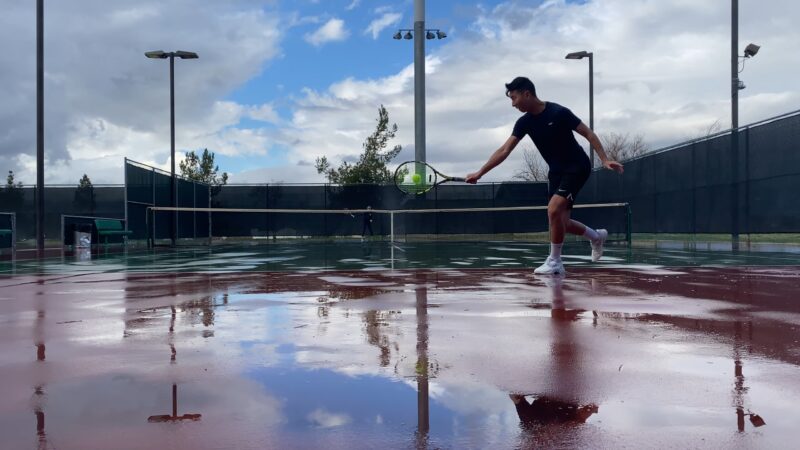
The key is to shorten your swings and opt for more compact, controlled movements. The rationale is simple: with less predictable ball behavior, your reaction time must be quicker, and your margin for error is smaller. I teach players to focus on their footwork, staying on the balls of their feet to maintain balance and readiness for the skidding balls.
Additionally, the serve and volley game can become a strategic asset in wet conditions. A softer serve with less spin can be more effective as the ball will skid, making it difficult for the opponent to return. At the net, sharp reflexes and a gentle touch on volleys can turn the conditions to your advantage. It’s about being agile, both in body and mind, and using the conditions to outmaneuver your opponent.
Maintain the Equipment
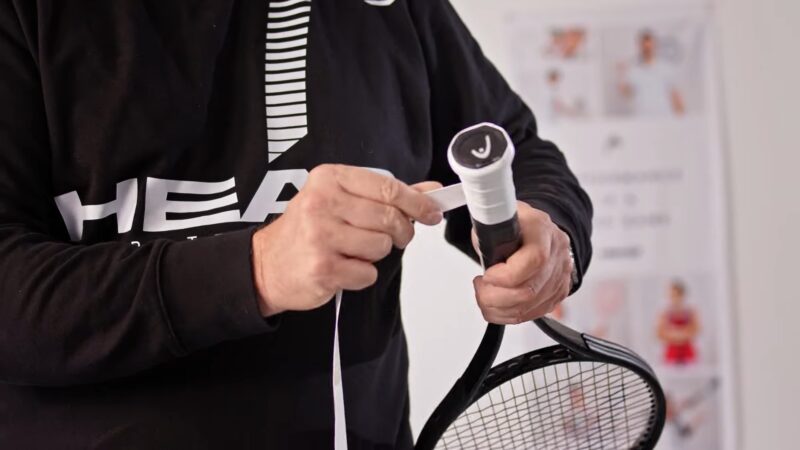
Racket grips can become slippery when wet, so I always have a stock of overgrips and towels at hand. Changing grips frequently and using wristbands to prevent sweat from running down onto your hands can make a significant difference in maintaining control of your racket.
For tennis balls, it’s crucial to keep them as dry as possible. I advise players to rotate balls frequently and keep them in a dry towel or even a sealed container when not in use. This helps to extend their playability and ensures the game can continue with minimal impact from the moisture.
Simply Play Indoor
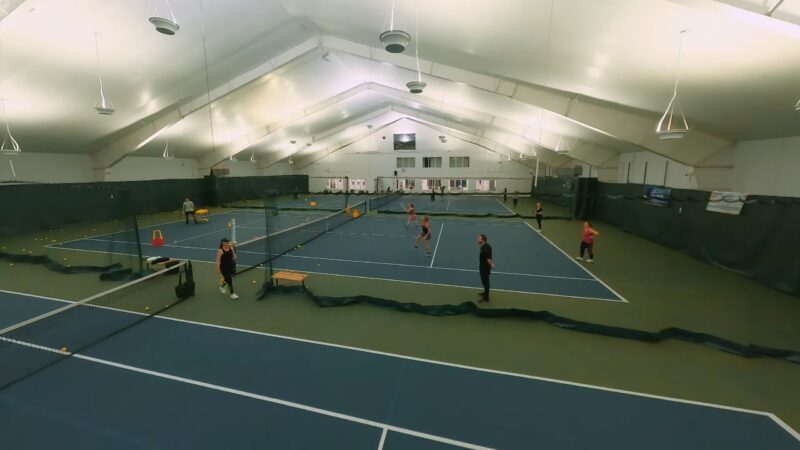
While hard court can still be playable when it is raining, the conditions will simple become too challenging. Also, you are risking an injury since the floor will become slippery. In that matter, the simple solution is to find a terrain with a cover.
If there are no available covered options, you can take a break from playing and go to the gym instead. Trust, exercising has the same importance as practicing your skills with a racquet.
FAQs
Why can’t tennis be played in the rain?
Tennis is typically not played in the rain because wet conditions can make the court slippery, posing a risk of injury to players. Additionally, the rain affects the ball’s performance, making the game unpredictable and not up to professional standards.
Is it safe to play tennis in a thunderstorm?
No, it is not safe to play tennis during a thunderstorm. The presence of lightning poses a significant risk of severe injury or death. It’s important to stop play immediately and seek shelter when a thunderstorm is nearby.
Can you play with wet tennis balls?
Playing with wet tennis balls is not recommended. They become heavier and can alter the flight and bounce of the ball, which can lead to injuries as players exert more force than usual. Wet balls also deteriorate quickly and can damage tennis rackets over time.
Can you play clay tennis in rain?
Clay courts are more absorbent than hard courts, so light rain may not stop play immediately. However, heavy rain will make clay courts too muddy for safe play, and they will need time to dry afterward to be playable again.
What happens if it starts raining during a tennis match?
If it starts raining during a match, play is usually suspended for safety reasons. The match will either be postponed until conditions improve or moved to an indoor court if available and appropriate. Players and officials aim to resume play as soon as it’s safe to do so.
Conclusion
While a love for tennis knows no bounds, safety and the integrity of the game take precedence in inclement weather. Rain transforms the court and the equipment, presenting challenges that extend beyond the game’s strategy to the well-being of the players.
When the rain falls, it’s a signal to pause, plan, and prepare for brighter, drier days on the court.
Related:
- 20 Best Tennis Shoes 2024 - Stylish and Athletic
- 18 Best Tennis Racquets 2024 - Exclusive Reviews &…
- Top 19 Best Tennis Bags 2024 [Unbiased Reviews]
- 15 Best Tennis Balls 2024 - USTA and ITF Approved
- 15 Best Tennis Racquet for Beginners & Intermediate…
- 10 Best Tennis Ball Machine 2024 - Perfect for Solo Players

